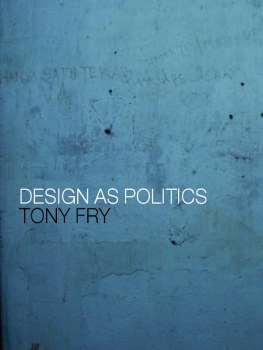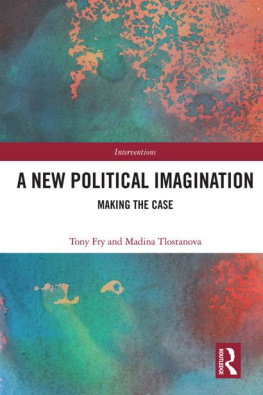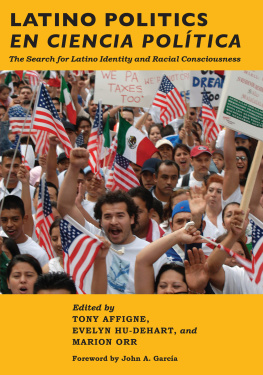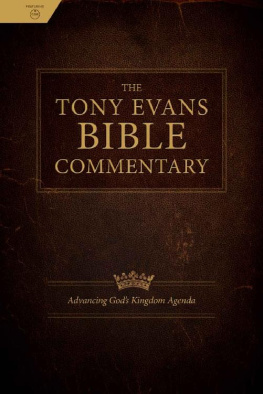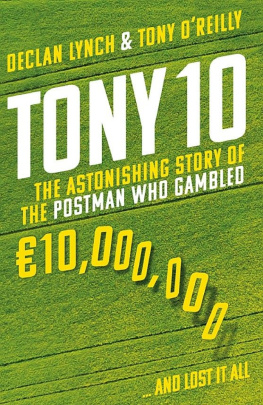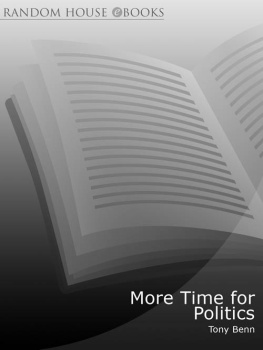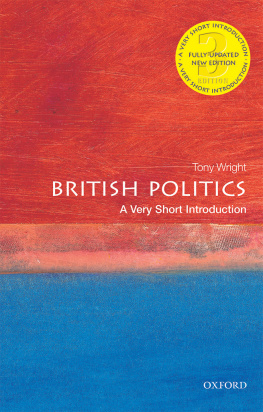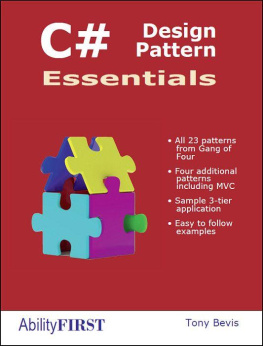Tony Fry - Design as Politics
Here you can read online Tony Fry - Design as Politics full text of the book (entire story) in english for free. Download pdf and epub, get meaning, cover and reviews about this ebook. year: 2010, publisher: Berg Publishers, genre: Politics. Description of the work, (preface) as well as reviews are available. Best literature library LitArk.com created for fans of good reading and offers a wide selection of genres:
Romance novel
Science fiction
Adventure
Detective
Science
History
Home and family
Prose
Art
Politics
Computer
Non-fiction
Religion
Business
Children
Humor
Choose a favorite category and find really read worthwhile books. Enjoy immersion in the world of imagination, feel the emotions of the characters or learn something new for yourself, make an fascinating discovery.
Design as Politics: summary, description and annotation
We offer to read an annotation, description, summary or preface (depends on what the author of the book "Design as Politics" wrote himself). If you haven't found the necessary information about the book — write in the comments, we will try to find it.
Design as Politics — read online for free the complete book (whole text) full work
Below is the text of the book, divided by pages. System saving the place of the last page read, allows you to conveniently read the book "Design as Politics" online for free, without having to search again every time where you left off. Put a bookmark, and you can go to the page where you finished reading at any time.
Font size:
Interval:
Bookmark:
DESIGN AS
POLITICS
DESIGN AS
POLITICS
Tony Fry

English edition
First published in 2011 by
Berg
Editorial offices:
First Floor, Angel Court, 81 St Clements Street, Oxford OX4 1AW, UK
175 Fifth Avenue, New York, NY 10010, USA
Tony Fry 2011
All rights reserved.
No part of this publication may be reproduced in any form or by any means without the written permission of
Berg.
Berg is the imprint of Oxford International Publishers Ltd.
Library of Congress Cataloging-in-Publication Data
Fry, Tony.
Design as politics / Tony Fry. English ed.
p. cm.
Includes bibliographical references.
eISBN: 978-1-84788-706-1
1. DesignPolitical aspects. 2. Sustainability. I. Title.
NK1520.F78 2010
745.2dc22
2010036952
British Library Cataloguing-in-Publication Data
A catalogue record for this book is available from the British Library.
Typeset by JS Typesetting Ltd, Porthcawl, Mid Glamorgan
Printed in the UK by the MPG Books Group
www.bergpublishers.com
Contents
Preface
Introduction
Redirection, Design and Things
Remaking Sovereignty
Design Beyond the Limits
Whatever we write is always, unavoidably, from a perspective. This book comes from a Western sensibility that fully acknowledges the significance of its other but can never speak as or for it. Likewise, its engagement with design and the political comes from a longstanding attachment to thinking about and acting within both domains. Out of the sediment of this history the book offers original thinking. Such a claim begs being tempered by a remark of Martin Heideggers: the more original the thinking, the richer will be what is unthought in it. The unthought is the greatest gift that thinking can bestow. By implication, the reader is faced with the challenge of judging what is said and discovering what is not.
Unapologetically, this is predominantly a work of theory but with an overriding practical aim: to bring into presence thinking that can be acted upon in situated contexts. So while there are examples of action they are merely illustrative of this intent.
There is a simple and vital question that needs to be posed immediately: in the face of the unsustainable state of the world, what can political activists and designers (including myriad other professionals who, knowingly or unknowingly, make design decisions) do? In the shadow of this question, and prior to answering it, there are a few things that need to be understood.
We all confront an unavoidable choice: we either support the status quo (a choice so often made unknowingly) or we choose a path of change (which few do). Change only occurs in two ways: by accident or by prefigured intent (which is de facto design). To choose change means knowing how to identify, create and become an agent of change who is able to mobilize design to this end. For non-designers and designers, the potential (rather than the actual) capability of design as an instrument of change needs to be grasped. Specifically, to design against the unsustainable requires the nature of design itself to be transformed. It needs to become (as was argued in my Design Futuring) a redirective practice.
Now to answer the question. What all agents of change need to do is to learn how to move design out of its economic function and into a political frame. But for this to be possible the current nature of that frame needs to be understood. For people outside design practice, the potential of design transformed requires exposure, as does the current designing nature of the political. So contextualized, the entire project of the book can be summed up as the transformation of design and of politics combining, for all agents of change, to become the means by which the moment and process of Sustainment (the overcoming of the unsustainable) is attained. For this to be realized design, designing and politics need to be thought about in a new way. This book is about such thinking, and its not easy. How could it be when the challenge is so enormous?
Certainly, the tone and content is very different from good news sustainability narratives that try to give the impression that critique is negative and disabling and that the real task is to pragmatically get stuck into positive projects. Of course positive projects are needed but they have to be based on a well-developed grasp of the nature of the unsustainable and of a significant scale to make a real difference. This implies confronting the problem, no matter how daunting, while rejecting all gestural activity that plays into the hands of green-washers. Clearly how problems are brought to light is absolutely critical. They cannot simply be taken as given: to be solved they have to be understood and engaged at a level of foundational causality. So much of what is taken to be the problem (not least in the environmental area) is actually symptomatic of something far more deeply entrenched. This is not acknowledged. So, while environmental impacts have to be dealt with, the problem will not be solved unless their economic and cultural causes are confronted and resolved.
A foundational engagement with causes so often requires one to learn to think and act in another way, and therefore to participate in a process of unlearning. This is hard to do attachments to habitual ways of thinking are especially difficult to break. More than this, that which is familiar and taken-for-granted fades into the background. We simply do not see, feel or think about what has become embedded in our mode of being. For instance, we make judgements about so many things every day, and while we are aware of those that are obvious, mostly we do not even notice.
Yet many of the actions that follow from these judgements have significant consequence for our health, the wellbeing of others, the material environment and so on. Likewise, within the frame of reference of Sustainment, which was never present in our upbringing or if it was, only in a very underdeveloped way what we fail to realize is that we were educated in error. To grasp this is to face the challenge of confronting what we have learned, which means finding ways to drag it out of the familiar, unlearning it and learning anew.
It is not hard to comprehend how the different worlds within the world we human beings make arrive via artifice as physical constructs. What is harder to recognize and work with is the reality of our world-making as culturally directed. Essentially, we see and make a world through the prism of our culture, but mostly it exists as an unconsidered condition of normality. Here, then, is another dimension of the predominantly taken-for-granted, but in this case our inner experience and our external world of meaning fuse. There is simply no clear dividing line between the culture we dwell in and the dwelling of the culture within us.
The implication in relation to Sustainment is obvious. Foundationally and indivisibly, we are simultaneously bare life, inculcated knowing beings and beings-in-culture. For a culture of sustainment to become possible both our culture and ourselves require to change via directed cultural transformation (culture changes all the time, but not in any specifically directed manner). The only way that the nature of culture is directionally changed toward a specific direction is by some form of cultural politics.
To emphasize: one can say that in making ones self, that self is also being made in the material and cultural environment we call world (the de facto world within the world). In so doing, we are created in/as a world of difference. However, this formation is contradicted by our collective classification as humanity.
Next pageFont size:
Interval:
Bookmark:
Similar books «Design as Politics»
Look at similar books to Design as Politics. We have selected literature similar in name and meaning in the hope of providing readers with more options to find new, interesting, not yet read works.
Discussion, reviews of the book Design as Politics and just readers' own opinions. Leave your comments, write what you think about the work, its meaning or the main characters. Specify what exactly you liked and what you didn't like, and why you think so.

